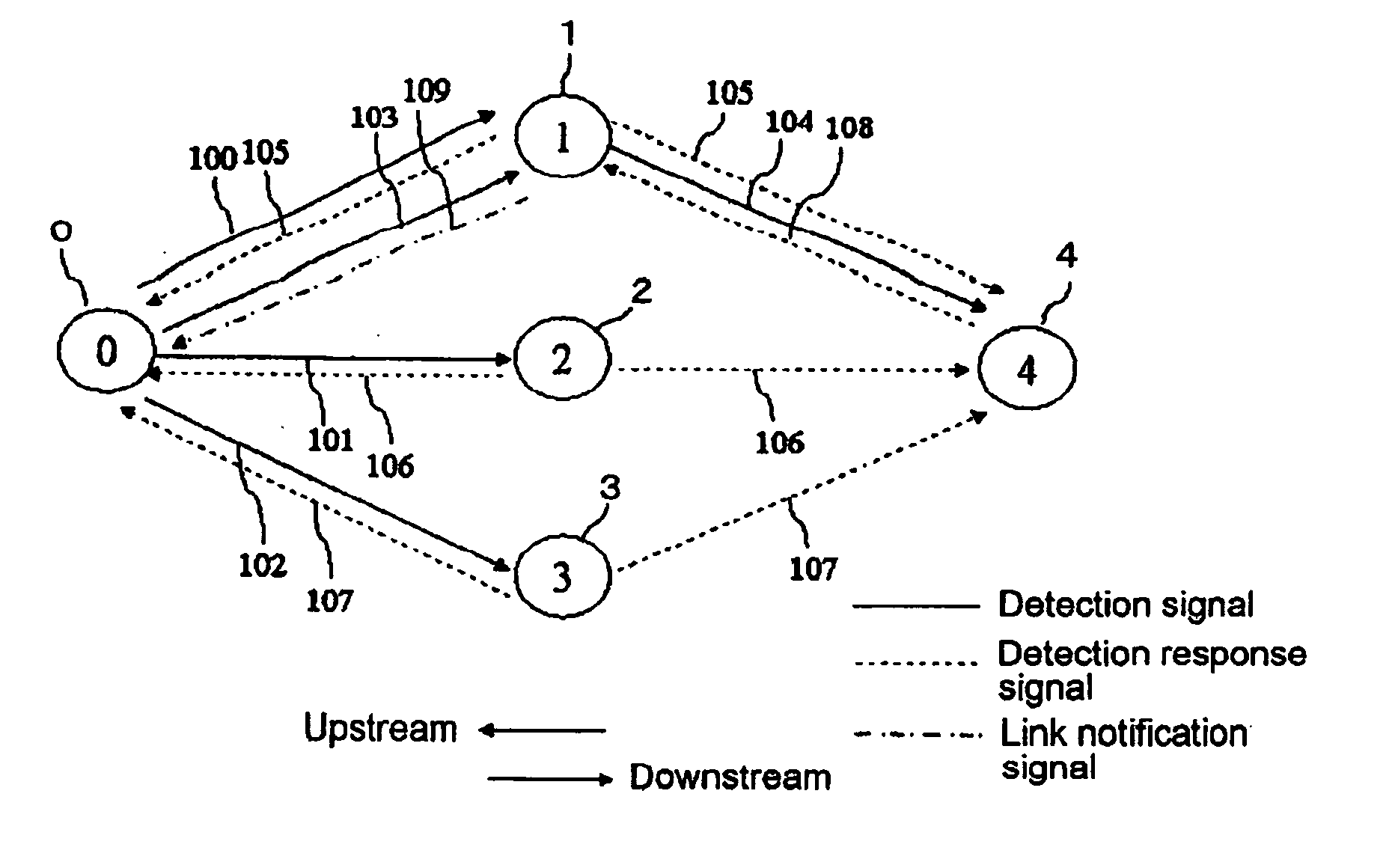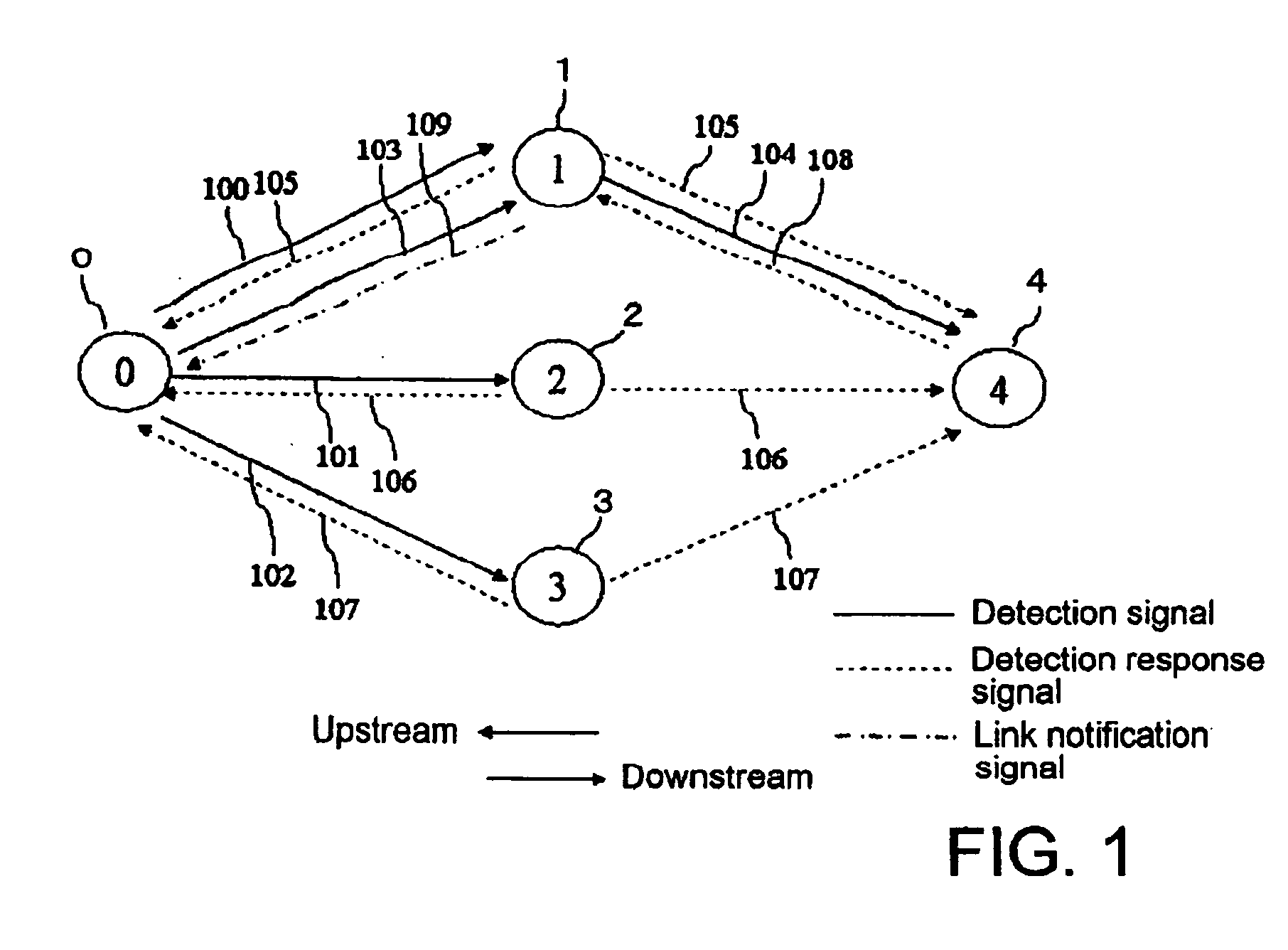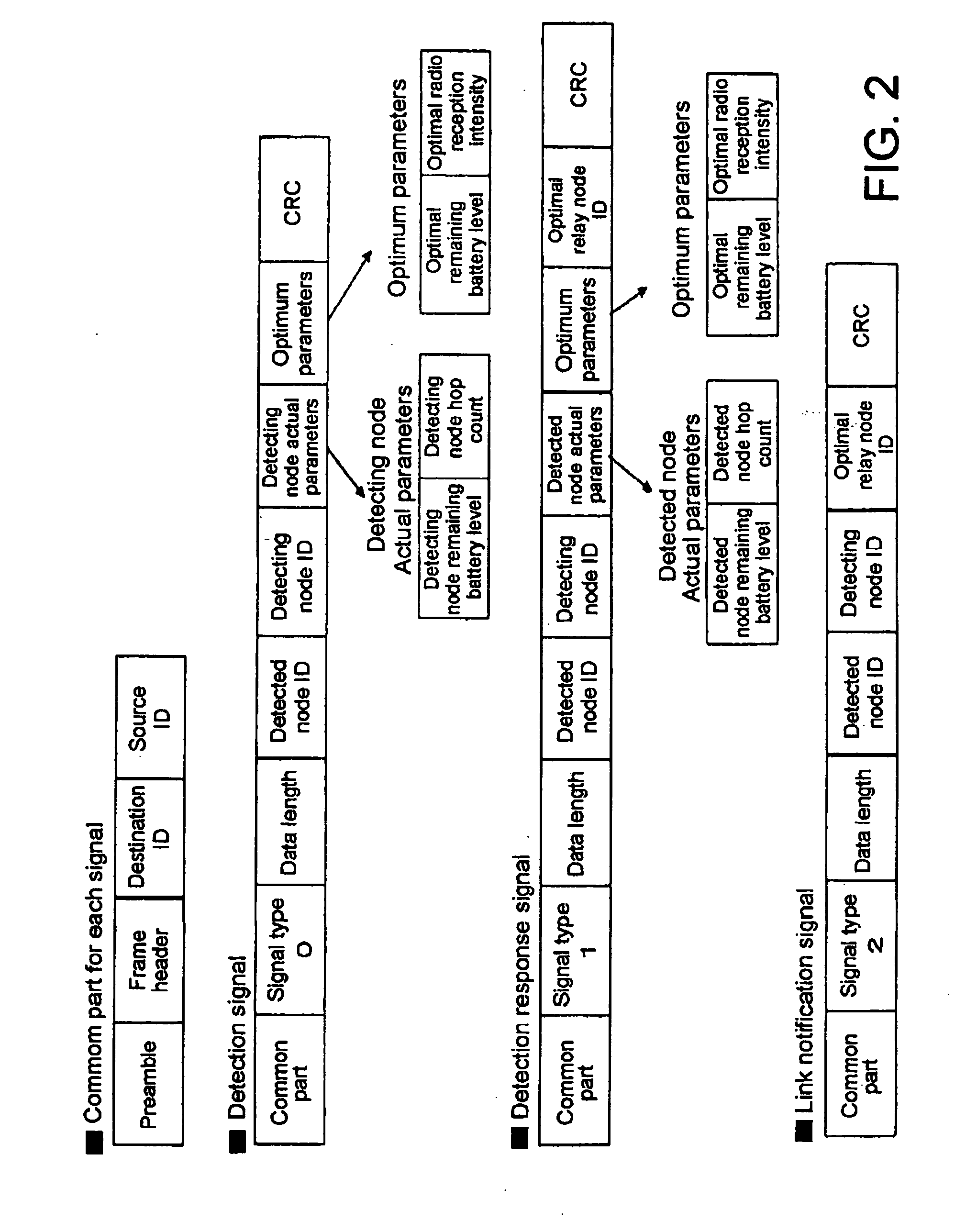Optimal relay node selecting method and multi-hop radio communications network system
a relay node and network system technology, applied in the field of multi-hop radio communications, can solve the problems of increased power consumption, low efficiency, packet collision and retransmission, etc., and achieve the effect of efficient finding the optimal transmission path
- Summary
- Abstract
- Description
- Claims
- Application Information
AI Technical Summary
Benefits of technology
Problems solved by technology
Method used
Image
Examples
Embodiment Construction
[0036] In FIG. 1 which generally describes an optimal relay node selecting method in routing a multi-hop radio communications path based on an embodiment of the present invention, a multi-hop radio communications network comprises base node 0, and nodes 1 to 4. Base node 0 is assigned identification number (ID) ID0, while nodes 1 to 4 are assigned ID1 to ID4, respectively. Base node 0 centrally controls the multi-hop radio communications network, and also operates as a base station for nodes 1 to 4.
[0037] Base node 0, which is also called “centralized control unit / base station,” is distinguished from ordinary nodes 1 to 4.
[0038] In this multi-hop radio communications network, detection signals 100 to 104, detection response signals 105 to 108, and link notification signal 109 are transmitted and received between nodes for routing a path. In the embodiment, assume that nodes 1 to 4 are all driven by batteries, and the remaining battery level in each node is also taken into consider...
PUM
 Login to View More
Login to View More Abstract
Description
Claims
Application Information
 Login to View More
Login to View More - R&D
- Intellectual Property
- Life Sciences
- Materials
- Tech Scout
- Unparalleled Data Quality
- Higher Quality Content
- 60% Fewer Hallucinations
Browse by: Latest US Patents, China's latest patents, Technical Efficacy Thesaurus, Application Domain, Technology Topic, Popular Technical Reports.
© 2025 PatSnap. All rights reserved.Legal|Privacy policy|Modern Slavery Act Transparency Statement|Sitemap|About US| Contact US: help@patsnap.com



